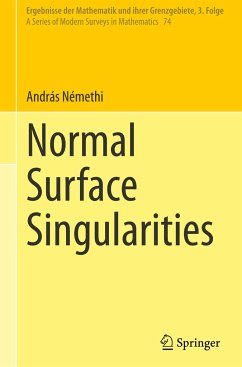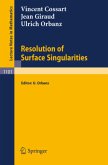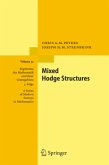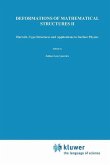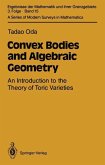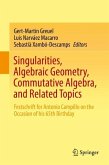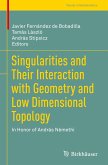This monograph provides a comprehensive introduction to the theory of complex normal surface singularities, with a special emphasis on connections to low-dimensional topology. In this way, it unites the analytic approach with the more recent topological one, combining their tools and methods.
In the first chapters, the book sets out the foundations of the theory of normal surface singularities. This includes a comprehensive presentation of the properties of the link (as an oriented 3-manifold) and of the invariants associated with a resolution, combined with the structure and special properties of the line bundles defined on a resolution. A recurring theme is the comparison of analytic and topological invariants. For example, the Poincaré series of the divisorial filtration is compared to a topological zeta function associated with the resolution graph, and the sheaf cohomologies of the line bundles are compared to the Seiberg-Witten invariants of the link. Equivariant Ehrharttheory is introduced to establish surgery-additivity formulae of these invariants, as well as for the regularization procedures of multivariable series.
In addition to recent research, the book also provides expositions of more classical subjects such as the classification of plane and cuspidal curves, Milnor fibrations and smoothing invariants, the local divisor class group, and the Hilbert-Samuel function. It contains a large number of examples of key families of germs: rational, elliptic, weighted homogeneous, superisolated and splice-quotient. It provides concrete computations of the topological invariants of their links (Casson(-Walker) and Seiberg-Witten invariants, Turaev torsion) and of the analytic invariants (geometric genus, Hilbert function of the divisorial filtration, and the analytic semigroup associated with the resolution). The book culminates in a discussion of the topological and analytic lattice cohomologies (as categorifications of the Seiberg-Witten invariant and of the geometric genus respectively) and of the graded roots. Several open problems and conjectures are also formulated.
Normal Surface Singularities provides researchers in algebraic and differential geometry, singularity theory, complex analysis, and low-dimensional topology with an invaluable reference on this rich topic, offering a unified presentation of the major results and approaches.
In the first chapters, the book sets out the foundations of the theory of normal surface singularities. This includes a comprehensive presentation of the properties of the link (as an oriented 3-manifold) and of the invariants associated with a resolution, combined with the structure and special properties of the line bundles defined on a resolution. A recurring theme is the comparison of analytic and topological invariants. For example, the Poincaré series of the divisorial filtration is compared to a topological zeta function associated with the resolution graph, and the sheaf cohomologies of the line bundles are compared to the Seiberg-Witten invariants of the link. Equivariant Ehrharttheory is introduced to establish surgery-additivity formulae of these invariants, as well as for the regularization procedures of multivariable series.
In addition to recent research, the book also provides expositions of more classical subjects such as the classification of plane and cuspidal curves, Milnor fibrations and smoothing invariants, the local divisor class group, and the Hilbert-Samuel function. It contains a large number of examples of key families of germs: rational, elliptic, weighted homogeneous, superisolated and splice-quotient. It provides concrete computations of the topological invariants of their links (Casson(-Walker) and Seiberg-Witten invariants, Turaev torsion) and of the analytic invariants (geometric genus, Hilbert function of the divisorial filtration, and the analytic semigroup associated with the resolution). The book culminates in a discussion of the topological and analytic lattice cohomologies (as categorifications of the Seiberg-Witten invariant and of the geometric genus respectively) and of the graded roots. Several open problems and conjectures are also formulated.
Normal Surface Singularities provides researchers in algebraic and differential geometry, singularity theory, complex analysis, and low-dimensional topology with an invaluable reference on this rich topic, offering a unified presentation of the major results and approaches.
"The book serves its main purpose in a perfect way, and will be a very useful guide or handbook for readers working in algebraic geometry, complex analytic geometry, and algebraic topology. Experts in this field will also enjoy the various topics and discover new perspectives. It is self-contained regarding the main materials and provides detailed explanations of techniques and related topics. For these reasons, this book is a very useful for young researchers as well." (Tomohiro Okuma, zbMATH 1523.14001, 2023)

